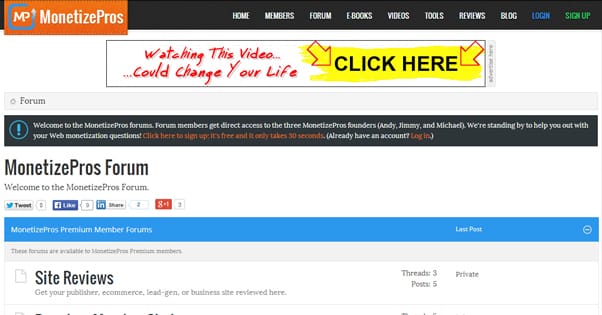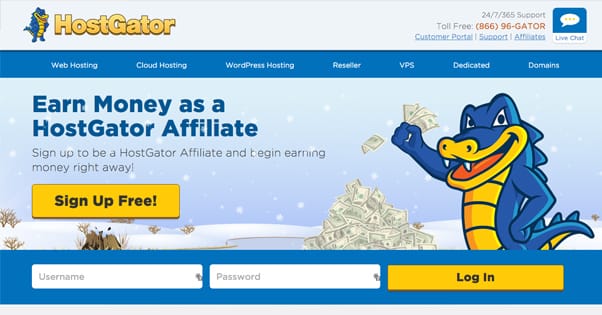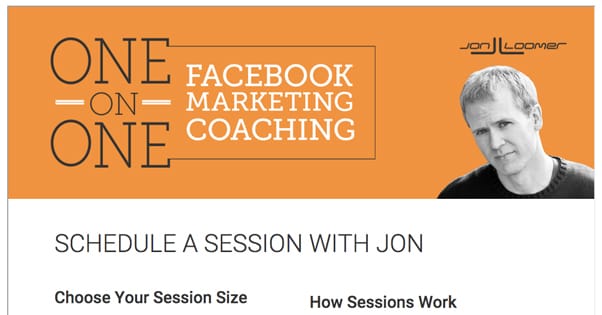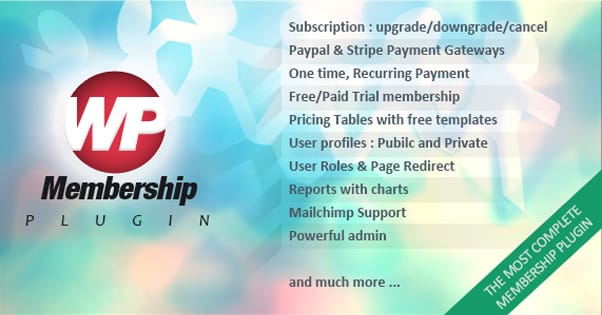Our Complete List of Blog Monetization Techniques
Published by Kenny Novak • Monetization • Posted January 21, 2016 ContentPowered.com
ContentPowered.com
Making money from blogging is the dream of many and the reality for a few. It’s not easy, but at the same time, it’s not as impossible as many people seem to think. It’s just that a lot of people go about it the wrong way, aren’t willing to invest the time and effort necessary, or think they can take shortcuts to success.
Before we begin, I’d like to make a note about those shortcuts. In general, avoid trying to be clever and cutting corners. Far too often, I see bloggers or business owners come up with a “brilliant” idea for making a ton of money from some common monetization strategy. The vast majority of the time, their brilliant idea is just an old black hat technique that gets their blog de-indexed and kills their business.
Any time you have a brilliant idea for a shortcut or a growth hack, consult with someone who knows what they’re doing and make sure it isn’t a black hat technique that will penalize you in some way. You might have a real growth hack on your hands, so it’s good to confirm.
Anyways, what I’ve done is compiled a list of pretty much any way you can make money, and gathered those methods into broad categories. So, for example, different types of ads – text ads, banner ads, ppm and ppc, all of those variations – fall under one heading of Display Advertising. Keep that in mind as you read; each type of monetization below is actually a broad spectrum with a lot of depth to customize.
Use a Patreon
Patreon is the modern spin on an old technique. You’ve seen them before, at bars, at restaurants, at cafes, on websites and in front of buskers. It’s the tip jar, transformed for a digital age.
You can make money for your blog by putting up a Paypal donate button or a tip jar, and that’s fine. It’s not very effective for most people, though, for one simple reason; very few people feel the need to donate to a website. If you’re lucky, you’ll make enough money to cover your hosting fees. More likely, you won’t make more than a few bucks a month; hardly a way to live.
Patreon adds a new spin and a hint of accountability to the process. It allows content creators to set up a profile as a hub for recurring monthly donations. This is much better than a tip jar, because while a single $5 tip from a reader is great, a recurring $3 a month from a reader is even better.
The accountability comes from various donation tiers and account types, though some of it only applies to creatives. I’ve seen serialized writing put up donation thresholds for extra weekly chapters, or webcomic artists guarantee extra pages each month when certain thresholds are met. Bloggers can do the same thing for certain numbers of posts in a month.
If nothing else, it’s easy to set up a Patreon account and have it running in the background. Even if all you get is enough to cover hosting costs each month, that’s one bill taken care of, and you can focus your on-site monetization efforts on other streams.
Display Ads
Display advertising is, essentially, any sort of advertising where a third party pays you to put content on your site.
It could be links in your posts, it could be shout-outs, it could be banner ads, and a whole lot more. A couple of the other types of monetization later could technically be included here, but I spun them off for the sake of clarity. Here’s what typically goes under display advertising:
- PPM Ads. These are ads that pay you when a user sees them, typically as banners. They require a ton of volume to make money, because each single view is worth pennies or fractions of pennies.
- PPC Ads. These are ads that pay you when a user clicks them. The click is harder to get than a view, so these earn you more for each click, though they’re still low value. Requires some hands-on monitoring to make sure the ads you run are relevant to your site.
- Banner Ads. Banners can be used for any other form of advertising, but can be over-used and make your blog look spammy if you’re not careful. You need to get the right kind of layout for them to work best.
- RSS Ads. These are text ads that appear in your blog RSS feed. Obviously, for these to be of any real value to you at all, you need to actually use and promote an RSS feed for your blog.
- In Text Ads. These are ads that look like links but, when clicked, pop up an embedded window that displays the ad. They have the detriment of making your blog slower and hurting usability, making users less likely to want to click links.
- Ad Widgets. These are similar to banners in that they take up a fixed space on your site, but they run a cycle of their own ads so you don’t have to optimize them manually. However, they are slower as an exchange for their dynamic nature.
- Media Ads. These are ads you run on other forms of media you produce, like audio ads before a podcast or stripe ads on YouTube videos.
- Direct Sale Ads. These are ads of any of the types above, that you run through a system you manage rather than through an ad network like AdWords. It’s a lot more work, but you can potentially charge premium rates.
As a whole, display advertising is going to tend to be a high volume, low value income stream. You can monetize people coming to your site and their mere presence there, but it’s not going to pay much, because it’s not necessarily worth much to the people paying you. That said, it’s also one of the most hands-free forms of monetization, and it’s the most passive sort of income you can generate.
Affiliate Product Sales
Affiliate marketing is worthy of its own post, and in fact entire websites are dedicated to the topic. The general process is simple; you link out to a business and recommend their product. When a user clicks your link, they have a special URL referral code or cookie that is added to their system. Then, when that user makes a purchase, you get a cut of the purchase price.
Affiliate marketing can earn you a ton of money, but it’s also a high competition field. You really need to have the volume and the focused niche to make it work. You can read a lot about it in posts like this one.
You can also do variations of affiliate marketing, like auction promotion or an eBay store. You even have the choice with affiliate marketing what you want to specialize in. The three general categories are services, physical products, and digital products. Selling someone’s eBooks, selling products from Amazon, and selling course subscriptions are all valid forms of affiliate marketing.
Normally, affiliate marketing is a one-time thing. You only get a cut when the user buys something, there’s generally no residual or passive income about it. If people stop coming to your site or you stop actively posting the links, you don’t make more money. However, some affiliate programs, usually for subscription services or course, will offer recurring payments. You might end up getting a $5 payment per person referred per month of their subscription, which can add up to quite a bit over time.
Sponsored Posts
As a professional blogger, you post about what’s valuable to you and what you think is valuable to your readers. Therefore, people want to be recommended, because when you tell your readers that my service is valuable, your readers are more likely to subscribe to my service.
The natural extension to that thought is that I might be willing to pay you to recommend me to your users. You write a blog post telling your readers about how awesome my service is, and I profit from the referrals.
How is this different from affiliate marketing? Well, for one thing, rather than just a specific link you run that you get paid for the traffic it sends, I get a whole post dedicated to me. I also don’t have to pay a percentage every time someone signs up; I just pay you up front for the post.
This can be potentially more lucrative for you than affiliate ads, because I might overestimate the value of the traffic you refer. On the other hand, it might come back to bite you, because it’s a one-time fee for me and an ongoing piece of content for you.
Sponsored posts are also a bit gray in the eyes of Google. You need to clearly note when a post is sponsored content, so you’re not misleading users into thinking that you’re organically recommending my service.
There’s a variation of the sponsored post that you see fairly often on sites like Forbes and Buzzfeed. These are posts that don’t outright recommend the service, but are paid for and produced by a company. Often they will cover a similar sort of niche or topic to what the brand does, but aren’t explicit recommendations. You can see some Buzzfeed examples here.
Another variation is the paid review, wherein you are sent a free product or service and a check, and you’re asked to review that product on your site. Often there is an unspecified expectation that you give it a positive review, though you don’t have to. Some high profile blogs I know have clear rules; if you pay them to review your product, you’re getting an honest review, even if it turns out bad. There are no refunds, and as such, these blogs often have potential clients back out of the deal. It’s up to you whether you want the money or the reputation for honest more.
Selling eBooks
With the exception of a Patreon, all of the above examples are about you leveraging the presence of your audience to sell the products and services of others, for a cut of the profits to you. This one, then, is the first of the methods you can use to sell your own content for a profit.
eBooks are the natural extension of blog writing, because what are they, really, if not just longer blog posts? If you write a 3,000-word blog post, it’s deep content with a lot of value. If you cover the same topic, in much greater detail, over the course of 10,000 words, you can call it a book and sell it as a stand-alone product. This is easier than you might think, because a blog spins off past content and relies on ongoing knowledge from readers, while an eBook is self-contained.
These are great because they’re just writing and, occasionally, images. You can even outsource their creation. Ghostwriters and freelance designers exist to cover all the bases, and you just have to worry about selling it. They also never go away; you can potentially keep selling an eBook year after year. In fact, you can revise and update the content – a minimal amount of work compared to creating it – and sell updated editions every year.
eBooks can be sold natively through your website using various ecommerce systems, or you can use a third party seller like Barnes and Noble or Amazon’s Kindle Direct. These latter will take a cut of the money you earn, but are more secure than trying to do it yourself. They’re also more trusted as retailers, so more likely to convert users.
Selling Writing Services
This one is leveraging your reputation as a writer to get paid for your writing talent. Some high profile bloggers get paid to write for several blogs other than their own, and they got there by building up their own blogs until they were noticed by more high profile sites. That snowballs until higher and higher quality clients, until they are top of the industry.
To pull this off, you need two things; high quality writing and a means of contact. It’s rare that someone will contact you out of the blue asking if you’ll write for their blog in exchange for money. More likely, they will see the fact that you have a “pay me to write for you” page somewhere. Well, more like a “hire me” page, but it works out the same way.
Ghostwriting is also an option, through it’s less lucrative because there are a million ghostwriters out there. You also don’t get anything beyond the basic payment out of it, because you don’t have your name attached and very, very few people who hire ghostwriters want to pay residuals on what they pay you to write.
Selling Consulting Services
Further leveraging your knowledge into money, you can be a consultant. A lot of high profile industry personages sell consulting on the side. It’s simply a good extra way to convert an hour of your time into a few hundred bucks, or more, depending on how much effort you want to put in and how much you want to charge. Some people intentionally set their prices high because they just want to use it as a side gig, whereas others have much more reasonable rates because they make a lot of their money doing it.
That link right there is an excellent example of how you can make money doing consulting. Jon Loomer is one of the world’s foremost experts on all things relating to Facebook marketing. He has a specific system set up, using GoToMeeting and screen sharing to show you first-hand how to do everything without needing remote access, some ad hoc Skype call, or an in-person visit. He allows you to guide the sessions, but he is perfectly willing to offer you suggestions. He also makes a heck of a lot of money doing it, with several sessions per week, running at $500+ per session. How would you like to make $500 for an hour of work?
Of course, you won’t be able to dive right in to selling your consulting for that much money, not unless you have an independent reputation as an expert. It’s less of a blog monetization strategy and more of a business, brand, and career all rolled into one.
Coaching is like consulting but at a lower level of effort and expertise. You don’t need to do things like deeply analyze a client’s business to find specific flaws; you can instead simply provide targeted but general tips to help them solve the specific problems they’re having. It’s a lower expectation type of consulting, but it has less money wrapped up in it.
All forms of coaching and consulting can be done one on one or in group sessions. Often consultants will offer a discount for groups, so that they’re making more money for their time but not so much as if each person had to pay the full fee individually. You can extend this as far as you like. I’ve even seen people offer smaller fees to do large lecture-style classes via Google Hangouts or another broad group broadcasting system. Maybe you’re not making $500 per person, but if you’re making $50 per person and have 500 people tune in, it’s a hell of a payday.
Selling Digital Products
To a certain extent, the whole thing about selling eBooks falls into this category. However, you can go a lot further with digital products.
Digital products are great because, while they require a certain amount of research and a lot of development, they don’t require shipping or storage or manufacturing. Once you develop a piece of software you don’t need to then produce 100,000 copies of it, you just ship off copies when they’re ordered.
You also have a very wide range of potential products you can sell. At the low end of development, you have minor WordPress plugins, site templates, WordPress themes, and basic digital content like graphic design, logos, and photography. With a little more resource and talent, you can make music and sound effects, videos, and other such items. You can sell more esoteric digital items, like patterns for crafts, tutorials, recipes, and other such digital content.
If you get into the higher end, you end up with more robust WordPress plugins – like Yoast SEO or another all-around suite of features – or an analytics software of your own. Any piece of software qualifies, really. You also have mobile apps, games, and other digital products in that sense as well.
Selling Physical Products
There are all sorts of items you can produce for a physical audience as well, and you don’t always have to handle the actual creation or distribution yourself. For example, there are a dozen or so different websites that sell t-shirts with various designs on them; all these companies do is produce the designs, they hire a distributor and a creator to do the rest of the work for them. Dropshipping companies make this nearly effortless.
You can have, well, basically anything on this list. You can have branded merchandise, if your brand is the sort of company that can be merched up without looking awful. You can buy and resell items, either locally from thrift stores and garage sales, or globally as an eBay reseller. You can make your own crafts, like the people on Etsy, with everything form vintage clothing designs to lampshades to jewelry to knitted anything. You can even just make the craft supplies, like those Etsy sellers with a million different kinds of beads available to buy.
You can scale things up into more large-scale products as well, but at that point, you’re again losing the focus of direct blog monetization. You’re just building a business around a physical product, and you happen to run a blog. There’s nothing wrong with this route – in fact, using the blog to advertise is basically required – but it’s out of the scope of most people who are reading a post like this.
Offering Membership Content
Creating exclusive content or opportunities for members is one way some blogs can make money, though it’s not all that effective these days. Some sites require a paid membership to access, or worse, will show the first few paragraphs of some content and require a membership to keep reading. This works for huge sites, but it’s not great for smaller blogs.
The primary reason for this is that every piece of content you produce and gate behind a membership portal is a piece of content not helping your organic marketing. Google obviously can’t index it; if they could, any user could see it for free. You get nothing via Google or social shares, because the content can’t be reached by non-members.
Memberships are a better idea for communities rather than content. A paid exclusive forum, promising expert opinions, tips, and contributions, is more attractive than just paying to read blog posts sight unseen. The idea is that people will have a more direct line, sort of like a low-level mass consulting gig.
Attract an Angel Investor or Sponsor
Another option is to just treat the blog like a business, or have a business idea attached to the blog. Use the blog to develop the idea, do research, and gather support. Then take the idea around to investors and see if you can get any backing. A lot of brilliant online businesses have investors behind them, some of them contingent upon raising a certain amount of funds on their own or through something like Kickstarter.
At the low level, you have sponsors, who aren’t going to do much more than give you some financial support in exchange for some product placement or brand support. It’s like a higher tier of advertising more than a low tier of sponsorship.
At the higher levels, you have angel investors like what you find on the Shark Tank or Dragon’s Den, depending on your country of origin. These investors financially support your brand and business, they help pay for and guide development of your business, and they lend their significant expertise and connections to you when you’re starting out. Of course, in exchange, they get a cut of your company, which can be significant down the road.
Selling the Site
At the end of the day, your blog might not be something you want to keep doing. It might be more work and less money than you’re willing to invest. It might have exploded beyond your capability to keep up with. It might have significant interest from companies looking to expand. Whatever the reason, it’s always an option: sell your site.
There are sites like Flippa that act as website markeplaces. When you sell a site, you pass it off and no longer own it. That’s it; you’re done with it. You got some money, you remain as the founder of the business, but you no longer have control or input. If that’s all fine to you, you can just go figure out how to sell it for the most you can make, cash out, and do something else.













